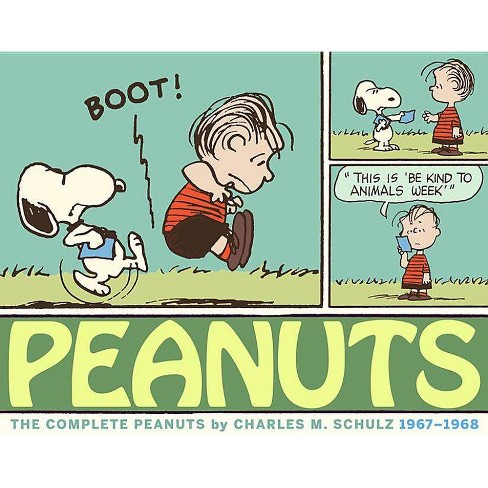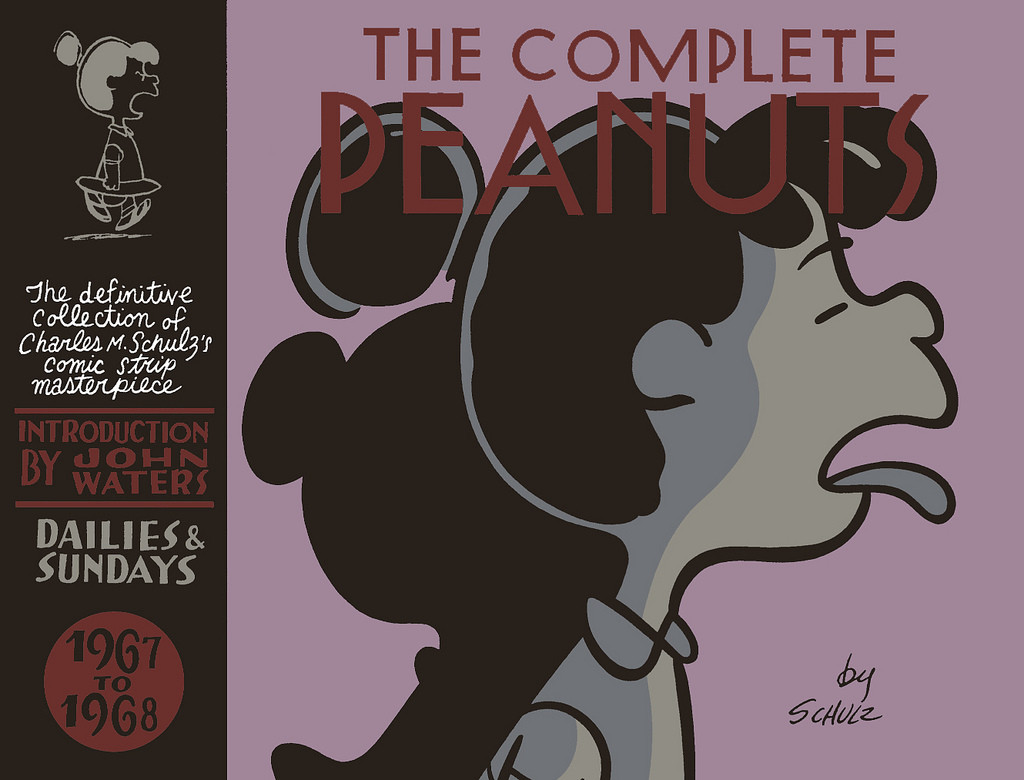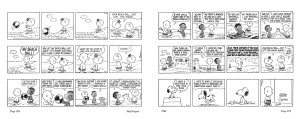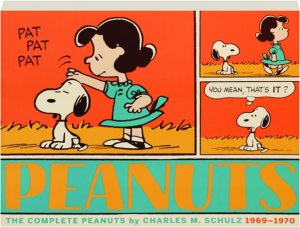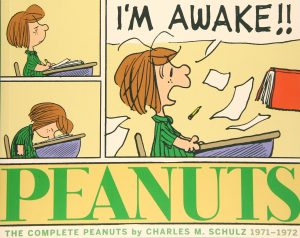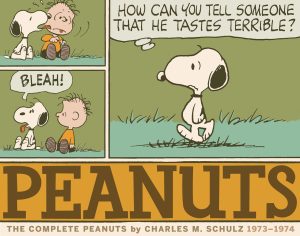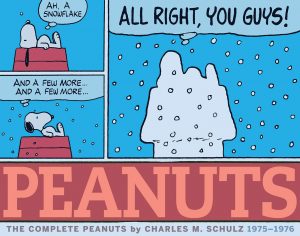Review by Woodrow Phoenix
“Have you seen our baseball schedule for this year, ‘Chuck’? My team plays your team twelve times… We slaughter you twice in April, smash you three times in May and ruin you once in June. We murder you twice in July, annihilate you three times in August and pound you once in September. It’s a great schedule, huh, ‘Chuck’?”
In volume nine Peppermint Patty’s big personality is only beaten by Snoopy’s even bigger parade of obsessive role-playing aliases. He goes to camp with Charlie Brown and stays in character as the World War I Flying Ace for two weeks. He challenges Lucy for arm-wrestling supremacy as the Masked Marvel, tries to become skating World Champion for the 1968 Olympics, and becomes the Easter Beagle, making a believer out of Linus, who gets lots of Easter eggs. Many of the extended sequences in this volume made their way into the Peanuts animated TV specials. Snoopy is traded to Peppermint Patty’s baseball team, he gets a letter from his original owner, Lila, and a shocked Charlie Brown can’t believe he “got a used dog!” Lila and José Peterson, a guest member of Charlie Brown’s baseball team, make brief appearances in this volume but the main new arrival is Franklin.
In April 1968 Schulz received a letter from a woman named Harriet Glickman:
“Since the death of Martin Luther King, I’ve been asking myself what I can do to help change those conditions in our society which led to the assassination and which contribute to the vast sea of misunderstanding, fear, hate and violence… It occurred to me today that the introduction of Negro children into the group of Schulz characters could happen with a minimum of impact. … I’m sure one doesn’t make radical changes in so important an institution without a lot of shock waves from syndicates, clients, etc. You have, however, a stature and reputation which can withstand a great deal.”
They exchanged a few letters and Franklin made his debut in Peanuts on July 31, 1968. He meets Charlie Brown on the beach and they talk about baseball and what their dads do for a living. Franklin’s father is fighting in Vietnam (notably the USA’s first war with black soldiers serving in an integrated military rather than in segregated units). Franklin’s three-day intro raised plenty of objections, with newspapers in the Southern states refusing to run those strips.
Franklin became a regular character attending school on the other side of town with Peppermint Patty and Marcie, despite criticism. Schulz recalled: “I did get one letter from one southern editor who said something about ‘I don’t mind you having a black character, but please don’t show them in school together.’ Because I had shown Franklin sitting in front of Peppermint Patty. But I didn’t even answer him. I never paid any attention to those things, and I remember telling Larry [Rutman, president of United Features] at the time about Franklin — he wanted me to change it, and we talked about it for a long while on the phone, and I finally sighed and said, ‘Well, Larry, let’s put it this way: Either you print it just the way I draw it or I quit. How’s that?’ So that’s the way that ended.”
Franklin’s seismic impact wasn’t enough to give him the cover of this volume, that goes to Peanuts lifer Violet. The introduction is by everyone’s favourite indie filmmaker, John Waters. Note that on page 53 the May 1 strip appears twice, displacing the May 3 strip. The missing strip appears in volume 10.
